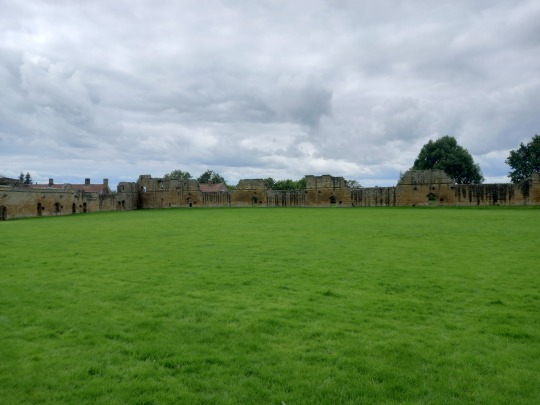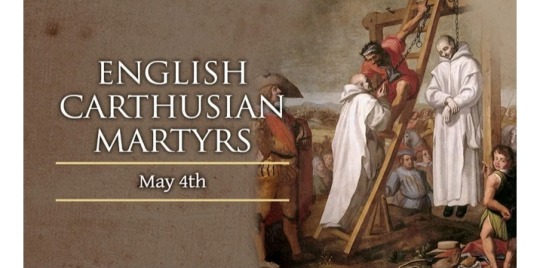#Charterhouse
Explore tagged Tumblr posts
Text

📍Charterhouse of Santa María de la Defensión, Jerez de la Frontera, Cádiz, Andalucía, Spain
#light academia#dark academia#classical#academia aesthetic#escapism#academia#books and libraries#classic literature#books#architecture#place#travel#destination#tourism#photography#Charterhouse#Santa María de la Defensión#Jerez de la Frontera#cádiz#andalucía#spain#royal core#cottage core#aesthetic#academic#building#mood#vibe#tumblr#exterior
150 notes
·
View notes
Text




La Certosa di Firenze
10/10/2024
14 notes
·
View notes
Text

St. Hugon Charterhouse in Allevard, Dauphiné region of France
French vintage postcard
#dauphin#historic#photo#briefkaart#hugon#vintage#dauphiné#region#monastery#sepia#photography#carte postale#allevard#postcard#postkarte#france#postal#tarjeta#carthusian#ansichtskarte#french#old#st#ephemera#postkaart#charterhouse#st. hugon charterhouse
9 notes
·
View notes
Text
Research trip to Mount Grace Priory

An old interest in monks has resurfaced. I studied Carthusians once upon a time (their manuscripts, really). The interest flares up now and again. This meant that a visit I'd long put off was back on the cards. Drove down to Northallerton in North Yorkshire on Sunday to see the ruin of Mount Grace Priory.
Mountgrace was founded in 1398 by Thomas de Holand, a nephew of Richard II. Carthusians and their brand of piety was super-fashionable at the time (due to the strictness of their Rule and a general post-Black Death rethink) but having a founder connected to Richard II became a problem. In 1415, it was re-founded by Thomas Beaufort. Mountgrace only lasted until 1539, when the Suppression of the monasteries kicked in.
I was keen to look at the reconstructed monk's cell.
I took lots of photos.
Lots.
Here's a few.
View of the church and bell tower

Entering the monk's cell

Laybrothers cooked the food, were responsible for upkeep and general day-to-day activities under the watch of the Procurator. (Laybrothering was a prestigious position. A few bishops retired to take up the job.) Among lots of other jobs, they would deliver food into hatches like this so the monks wouldn't have to interact.

Straight ahead is the living quarters. The fireplace in this cell is smaller than the one found in the sacrist's cell.

Desk by the windows. Lots of natural light.

A place to rest yourself and your reading materials

A place to rest yourself (the Carthusian schedule is brutal).

If you turn left, there's a nice glazed, private cloister looking out onto the cell garden.

If you turn right at the entrance, a covered walkway leads to the garden, freshwater drinking pipe and latrine (both plumbed in. Monastery plumbing was something else. I've seen the plans for London Charterhouse).

More garden! Small fruit tree and exterior view of the glazed private cloister.

Exterior view of the cell from the garden.

Let's go back inside and go upstairs! (These stairs really are steep. Believe the sign next to the fireplace. You have to come down backwards.)

Upstairs, we find the workshop! Spinning, weaving, copying books, woodwork, lots of useful activity.

Once that bell rings, you've got to go to church. A huge covered cloister once connected all those doorways and led to the church.

Can't remember if this is the church or chapter house I'm standing in.

Would've been a lovely window here, I bet.

The guest house was in better condition, mainly because Sir Lowthian Bell decided to restore it (and reconstruct the monk's cell). Here it is from the gardens.

There's still some original red plasterwork from the 14th century.

There's a decent museum in the guest house too. If you're into the Arts and Crafts movement, there's some Morris and Co. wallpaper and furniture, plus a couple of restored rooms. I liked this 14th century stone window looking into an Arts and Crafts lounge.

A pretty good day's research! Definitely recommend the place. Absolutely worth the trip.
#research#carthusians#mount grace priory#mountgrace charterhouse#carthusian#14th century#ruins#old ruins#late medieval#monks#arts and crafts#history#reformation#dissolution of the monasteries#charterhouse
6 notes
·
View notes
Text
DopeNation Snubbed at 2025 TGMA: Charterhouse Explains Why
According to Robert Klah, Head of Communications and Public Events at Charterhouse Productions, Ghanaian music duo DopeNation was not nominated for any category in this year’s TGMA because they failed to submit their songs for nomination. Despite releasing the hit song “Zormizor” during the year under review, DopeNation did not file for nominations, and subsequent attempts by the organizers to…
0 notes
Text
PICTORIAL: Inside the most expensive school in Nigeria
Inside Charterhouse Lagos, A newly commissioned primary school in Lekki with its secondary school underway that charges N42m as a fee per annum.


Charterhouse Lagos is the first British independent school in West Africa and part of the prestigious Charterhouse family of schools.


Here are inside photos of the school which is set to resume in September.






0 notes
Text
Charterhouse to announce main sponsor of Ghana Music Awards alongside nominee unveiling
The 25th edition of the Ghana Music Awards is highly anticipated, as it promises to showcase the best talent in the music industry. The process began on 29th January 2024, when a call was made to the industry and its stakeholders to submit their works from 1st January to 31st December 2023. The response was overwhelming, with thousands of entries pouring in by the 29th of February. The nominees…

View On WordPress
0 notes
Text



Prints arrived home today for the OCAS Biennial. Thank you @onlinereprographics; exquisite line work
1 note
·
View note
Text
Goodbye To All That by Robert Graves.
“England looked strange to us returned soldiers,” Continue reading Untitled
View On WordPress
0 notes
Text
Good lord. What humans do to each other defies imagination sometimes.
18 notes
·
View notes
Text

Some current reads - I have no idea why I'm reading two French classics at once but clearly I'm in the mood.
#the charterhouse of parma#stendhal#therese raquin#emile zola#the tempest#william shakespeare#books#reading#current reads#classic literature#french literature#secondhand books are the best
123 notes
·
View notes
Text


The Murri Affair (1974) / The Charterhouse of Parma (1982)
dir. Mauro Bolognini
#Fatti di gente perbene#la certosa di parma#the thing is it's over#the charterhouse of parma#the murri affair#mauro bolognini#film parallels#mine
8 notes
·
View notes
Text
SAINTS OF THE DAY (May 4)

The Carthusian Martyrs of London were the monks of the London Charterhouse, the monastery of the Carthusian Order in the city of London who were put to death by the English state.
The method of execution was hanging, disembowelling while still alive, and quartering. Others were imprisoned and left to starve to death.
These 18 Carthusian monks were put to death in England under King Henry VIII between 1535-1540 for maintaining their allegiance to the Pope.
The Carthusians, founded by St. Bruno in 1054, are the strictest and most austere monastic order in the western Church.
They live an austere hermitic life, their ‘monastery’ actually being a number of hermitages built next to each other.
When Henry VIII issued his “Act of Supremacy” declaring that all who refused to take an oath recognizing him as head of the Church of England committed an act of high treason, these 18 Carthusians refused and were sentenced to death.
The first to die were the Carthusian prior of London, John Houghton, and two of his brothers, Robert Lawrence and Augustine Webster, who were hanged, drawn and quartered, on 4 May 1535.
The prior is said to have declared his fidelity to the Catholic Church and forgiven his executioners before dying.
The Carthusians were the first martyrs to die under the reign of Henry VIII.
Two more were killed on June 19 of that year. By 4 August 1540, all 18 had been tortured and killed for refusing to place their allegiance to the king before their allegiance to the Pope.
They were beatified by Pope Leo XIII on 29 December 1886.
John Houghton, Robert Lawrence, and Augustine Webster were canonized by Pope Paul VI on 25 October 1970.
#Saints of the Day#English Carthusian Martyrs#Carthusian Martyrs of London#London Charterhouse#Carthusian Order#Carthusians#St. Bruno#King Henry VIII#Act of Supremacy
5 notes
·
View notes
Text

Florence Charterhouse, Tuscany region of Italy
Italian vintage postcard
#postkaart#carte postale#florence charterhouse#briefkaart#old#sepia#tuscany#postkarte#vintage#italy#postal#charterhouse#photography#ephemera#postcard#tarjeta#photo#ansichtskarte#italian#region#florence#historic
4 notes
·
View notes
Text
Vesuvius with moon above from the Charterhouse of Naples, Italy. January 30, 2025.

El Vesubio desde la Cartuja de Nápoles
Antonio Íñigo 30 de enero de 2025
324 notes
·
View notes
Text
Bronz Çağı Britanya'sında Ortaya Çıkarılan Şok Edici Şiddet ve Yamyamlık Döngüsü
1970’lerde İngiltere, Somerset’teki Charterhouse Warren’da 15 metrelik bir kuyunun derinliklerinde en az 37 bireyin kalıntıları keşfedilmişti. Bu alanda bulunan 3.000’den fazla kemik parçası üzerinde yapılan son analizler, M.Ö. 2500 ile 1500 yılları arasına tarihlenen Erken Bronz Çağı Britanya’sında şiddet, kasaplık ve muhtemelen yamyamlığa dair acımasız ve tedirgin edici bir hikâyeyi ortaya…

View On WordPress
#Barry Molloy#Britanya#bronz çağı#Charterhouse Warren#Cheddar Gorge#DNA analizi#erken bronz çağı#erken neolitik dönem#Gough Mağarası#iskelet#katliam#kemik analizi#Louise Loe#Rick Schulting#Somerset#yamyam
0 notes